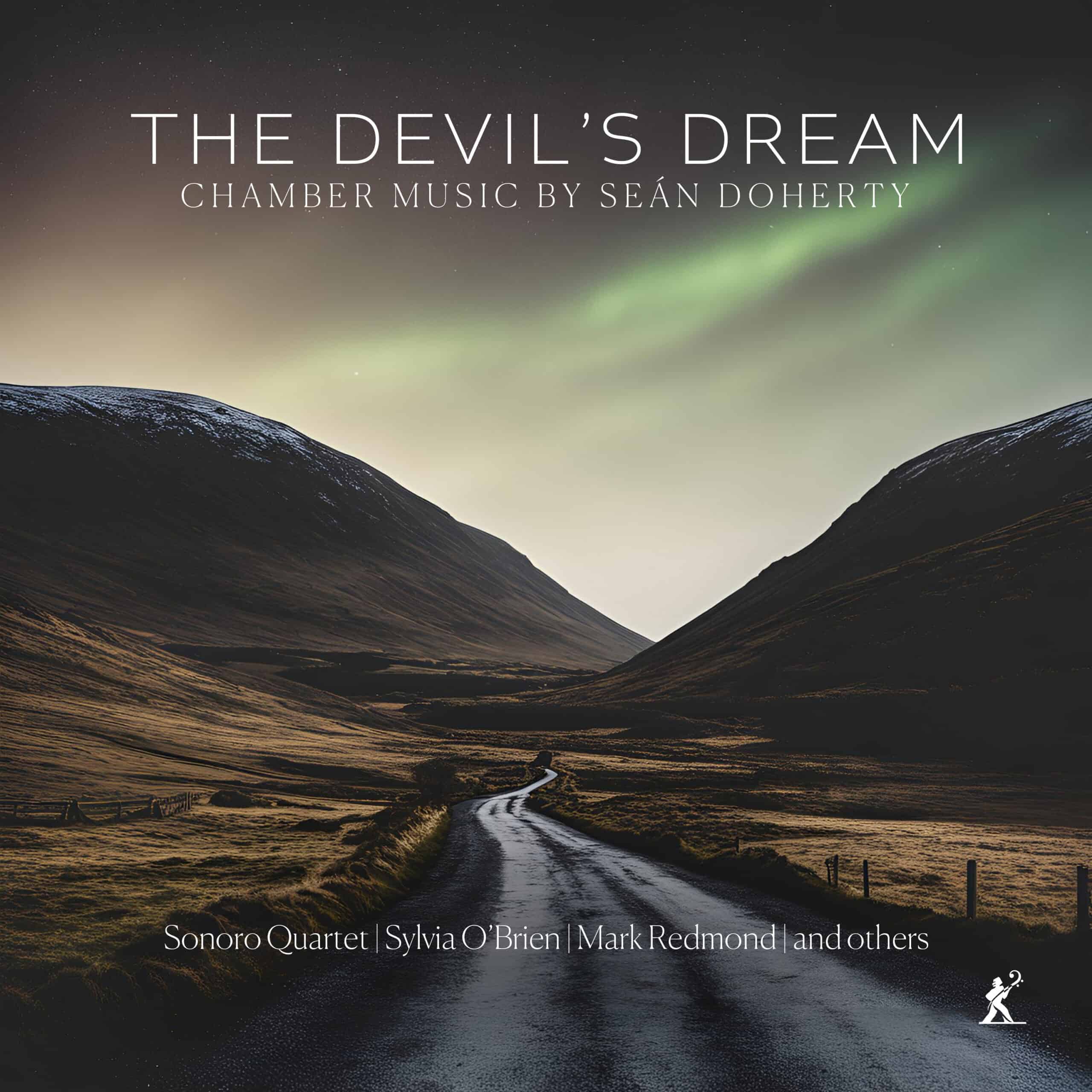Fanfare
It is good to expand on my (and Fanfare’s) previous experience of Seán Doherty: previously, three of his songs were reviewed in Fanfare 45:6 by myself, on another Metier disc, Ghost Songs.
Sean Doherty grew up in Derry, Ireland, and has a real affinity with the jig, the hornpipe, and the Irish storytelling tradition. The Devil’s Dream (2015) is a meditation on death that references specifically the Donegal fiddle tradition (starting with tuning and subtly morphing into music). Scored for string quartet, The Devil’s Dream is based on two tunes, “An Lodubh” and “The Devil’s Dream.” The piece also imagines a walk home by the composer’s teacher, James Byrne, who died before reaching his abode. The music coalesces into the first tune, as if focusing in, a process that sems to emphasize the melody’s melancholy; when the second tune rudely arrives, the music turns now into a danse macabre. Inevitably, perhaps, the plainchant Dies irae is part of the equation. Written in memory of James Byrne (1945–2008), while the piece brushes cacophony, it never quite reaches it: the processes remain intelligible, layered. And those moments of arrival, of merging, of coalescing, carry huge weight. There is no doubting the visceral excitement of this performance, but for all of that, it is the final section’s quietness that remains with the listener.
Scored for string quartet and soprano (Dr. Sylvia O’Brien), the 2008 Lament for the Poets is a setting of three contemporaneous responses to the Easter Rising; again, dream is important as here the responses are all parts of one dream. Here, a beautiful woman represents Ireland: she tells the poet of her sadness at her repression by foreigners, and aims to flee the country. Poets Lola Ridge, Marianna Moore, and Francis Ledwidge furnish the texts for “The Tidings (Easter 1916),” “Sojourn in the Whale,” and “Lament for the Poets 1916.” Once again, found material is part of the equation, this time, in the final movement, the traditional Irish air “The Lament for Sake Wallace.” O’Brien is extraordinary; the demands on the singer are huge, and she sings with utter purity and power. The second movement splits the activity into slow-moving high strings, anxious rhythms on cello, and the pure-voice tone of the soprano. Doherty’s sound vistas are extraordinary, compelling, and caught in a close and involving recording. The final movement begins with a processional like no other, ripped apart by string slashes; a wordless lament emerges, the restless cello bass once more protesting, now joined by thorny, active strings. The music sems to exhaust itself; out of the ensuing silence, there comes a chirruping violin, a cello drone, and long, melismatic soprano lines. A song of loss, and of birdsong, the extraordinary music, couched in modernity, speaks to ancient parts of us. Truly moving music.
The addition of the uilleann pipes gives No Go a distinctive Irish feel. This 2018 piece was inspired by the poetry of Ciaran Carson and describes a human being chased during the Troubles. The soloist is Mark Redmond, a PhD candidate at Dublin, whose feel for the music (and technical ability) is extraordinary. This is another take on traditional music through Doherty’s prism. The way he can zoom in on, and then just as suddenly retreat from, near-quotation is thrilling, as is the sense of the music accelerating like a machine out of control.
A lament and a farewell make up Drochshaol, the sound palette expanded by harp, concertina, flute, and fiddle. The result is extraordinary. Written in 2018, the title references the Famine. In “Fr. McCarthy’s Lament,” the pipes memorialize the dead of the parish; Doherty includes the plainchant of the Mass Kyrie in his materials. The second movement is “Prof. Boole’s Farewell”: the same Boole that invented Boolean Logic and first professor of mathematics at University College, Cork. There are parallels between Boole’s logic and the piece, but also there is a depiction of Boole’s train journey from Dublin to Cork. All in under three minutes; extraordinary.
Finally, we have Paddy’s Rambles through the Gravel Walks (2023). Two Donegal fiddle tunes appear here, one being “Paddy’s Rambles Through the Park,” and the other “The Gravel Walks to Granie,” an air and a reel. The underlying story tells of a walk home which this time entails a banshee. Paddy searches for the ghostly singer in this story, and we sense his discombobulation. Seán Doherty himself joins the quartet, plus Lauren O’Neill and Molly Tobin. The piece has a clear sense of direction and makes a perfect close.
A superb introduction, in fine recorded sound, to the music of Seán Doherty. Performances are utterly faultless throughout.
@divineartrecordingsgroup
A First Inversion Company
Registered Office:
176-178 Pontefract Road, Cudworth, Barnsley S72 8BE
+44 1226 596703
Fort Worth, TX 76110
+1.682.233.4978












